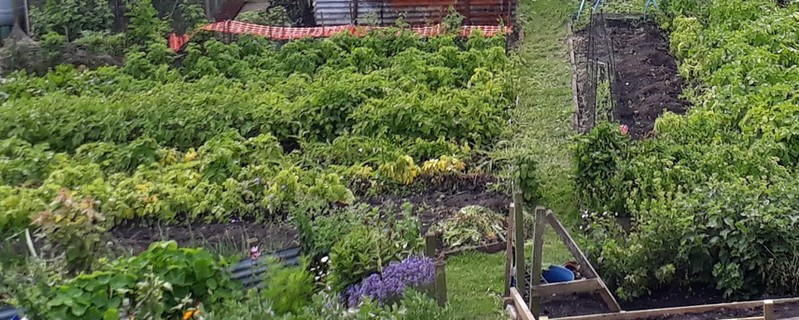Make your veggies permanent
As gardeners decide what to grow vegetable plots and allotment this year, I am looking at a trend in gardening that reflects a growing interest in reducing our carbon footprint and preserving wildlife: namely, growing permanent or perennial vegetables. This saves growing from seed or buying plants each year and also, as they are no-dig plants, saves on effort and benefits your soil micro-organisms. Asparagus & globe artichokes are probably the best known perennial veg but by no means the only choices and can take up a lot of space. A few others that you might like to try:
 Babington Leeks, a UK native but not one that you are likely to come across in the wild now. Start off by planting a few from ‘bulbils’ that develop like seeds on the flower head. If you let one grow on it will produce a typical Allium flower followed by a new crop of bulbils to increase your supply. You need to let the plant grow for the first year without picking to establish and bulk up. After that you can harvest for several years by cutting the leek off at the base in spring, leaving the bulb in the ground to re-grow. The plants go dormant in summer so will die back and then start to grow again in autumn.
Babington Leeks, a UK native but not one that you are likely to come across in the wild now. Start off by planting a few from ‘bulbils’ that develop like seeds on the flower head. If you let one grow on it will produce a typical Allium flower followed by a new crop of bulbils to increase your supply. You need to let the plant grow for the first year without picking to establish and bulk up. After that you can harvest for several years by cutting the leek off at the base in spring, leaving the bulb in the ground to re-grow. The plants go dormant in summer so will die back and then start to grow again in autumn.
Another member of the onion family is the Egyptian or Walking Onion. This is a very versatile crop as you can pick a few of the young leaves to use like chives in early spring, then as a cluster of bulbs starts to develop at the base you can pull some up to use like spring onions. The remainder mature in summer until they resemble a bunch of shallots; harvest some and leave a few to start the whole process again next year. In addition they too will produce bulbils at the top that eventually weigh down the leaf until the bulbils touch the ground and root – thereby ‘walking’ away from the parent.

Perennial Kale will form a robust plant up to 1.5m tall but the way to keep it under control is to harvest leaves regularly. There are several varieties and all are UK hardy.
Finally, Horseradish is also easy to grow for the strong tasting taproot. However a little goes a long way and it can be a bit too easy, so grow it in a pot because it is hard to eradicate once let loose in the ground.
If this blog has whetted your appetite then you can find much more information and source plants from The Backyard Larder, where another Alison has been growing perennial vegetables for 16 years and shares her experiences. And also provided the photographs.
Happy Gardening from Alison.
If you enjoyed reading this blog why not receive my monthly newsletter direct to your email inbox with blogs, video tips and seasonal articles to inspire and inform. Sign up HERE.

